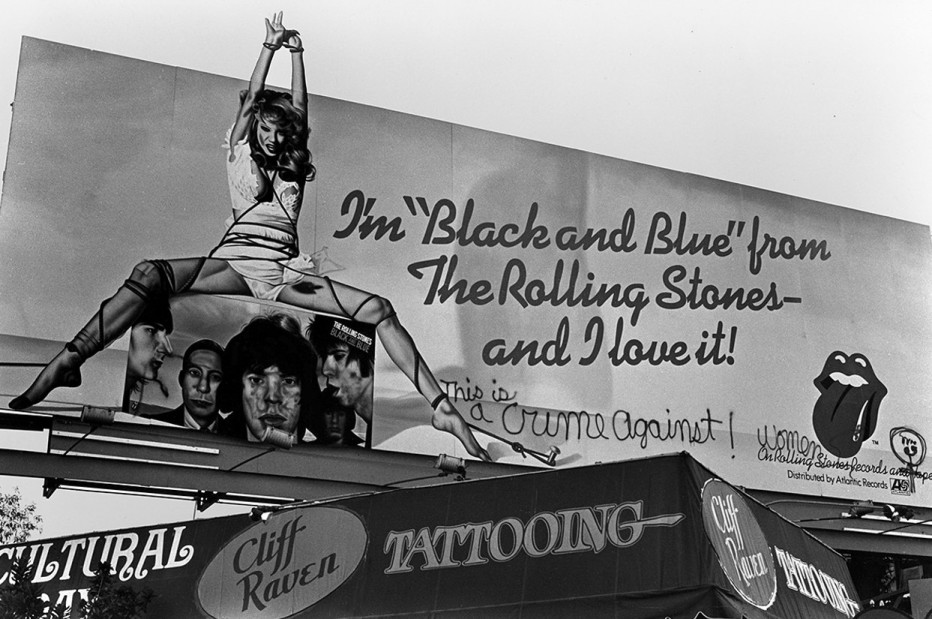Six reasons to buy Exile On Main Street twice
May 31, 2010 by John McKie

The sun is shining, festival season’s around the corner, Bob Dylan’s just had his birthday and there’s just been a brilliant album at No 1.
Not a brilliant current album, but you can’t have everything.
Exile on Main Street, first released in May 1972, might be that rare thing – an album worth buying twice.
The Stones’ greatest album (sorry,
Let It Bleed, Goat’s Head Soup and Sticky Fingers fans, but disagree below – that’s why they invented message boards) was created out of chaos as the band wriggled out of a contract with ex-manager Allen Klein, and fled a huge tax bill for the south of France.
As Mick Jagger admitted on Stephen Kijak’s excellent documentary
Stones In Exile, non-dom rock stars are “not very cool.” Just ask Phil Collins. In fairness to Jagger and Richards, they stopped being cool only long after they returned to become tax-abiding citizens.
Here are six reasons why every music fan should rejoice that this record has knocked Michael Buble, Florence and The Machine and the cast of Glee off their perches:-
1 Songs, song, songs
You know those records with the Stones’ greatest hits and big lips on the front – Satisfaction, Start Me Up, Ruby Tuesday, It’s Only Rock’n’Roll (But I Like It), Sympathy for the Devil – the ones you’ve probably heard ad infinitum. if you want all that, look elsewhere.
Exile has many of the real gems, which haven’t been played into submission. Tumbling Dice, which Jagger has revealed was about his American housekeeper’s gambling, Loving Cup, which The Stones covered with Jack White on Martin Scorsese’s Shine A Light and Shine A Light itself. You’ve also got Sweet Virginia, Soul Survivor, All Down the Line and 12 other corkers. That’s if you buy the original version. The 2010 reissue has ten extra tracks.
2 The time
What a golden period for music the early ‘70s were. For all that cultural historians will conveniently bookmark the ‘60s as being where it was at (Paul McCartney leaving The Beatles in 1970 provides a helpful full stop for that argument), George Harrison’s
All Things Must Pass surfaced in 1970, in ’72 there was
Exile, Stevie Wonder’s
Music of My Mind and
Talking Book were both released that year – Stevie fitted around a tour with the Stones themselves. In ’71 you had Joni Mitchell’s
Blue, the same year as Graham Nash’s debut solo album,
Songs for Beginners, Al Green’s work for Hi Records was just taking off, Neil Young was coming on to a game….
3 Supporting players
If modern day football is about the squad and not just the first team, this is the ultimate rock’n’roll example of squad rotation in action. Producer Jimmy Miller gets behind the maracas and drums, Mick Taylor proves the ultimate foil for Keef in a way that Ronnie never could replicate on record, and listen to Bobby Keys’ flourishes on sax on All Down the Line and Happy. On keyboards, the late, great Billy Preston and Pittenweem’s Ian Stewart provide more than adequate back-up. Bassist Bill Wyman sat out several tracks. He wasn’t greatly missed.
4 It’s got the Keith one
During every Stones tour, there is a moment where there is a mass exodus to the bar. It’s when Mick drawls “Keith’s going to do a couple of numbers now” and slinks offstage for a loo break. (Well, he is getting to that age.) Those buying a beer don’t know what they’re missing. Richards nearly always performs Happy – the best “Keith one” . As a song, it gives a tiny inkling as to why his solo records would end up being better than Mick’s.
5 The sprawl
The members of the band were scattered all over the South of France, although they eventually convened chez Keith at Villefranche-sur-Mer. Robert Frank’s artwork informs the tone of this record – it’s all over the place, musically, visually, lyrically. As Jagger says on the documentary, that’s its strength as well as a potential weakness.
The only place it’s really rooted geographically is in American music. Richards and Charlie Watts happily admit to being “American black music freaks” – hints of Bo Diddley, Chuck Berry, Muddy Waters, Little Richard can be heard on this, but so can gospel, New Orleans jazz and 12-bar blues. So much for concept albums.
6 The inspiration
Not the music that inspired the Stones – that’s listed above. Jack White, The Black Eyes Peas’ will.i.am, Caleb Followhill of the Kings of Leon all paid tribute on Kijak’s documentary.
No rock record in the past 25 years – save for possibly Prince’s
Sign O The Times, flashes of Damon Albarn’s work with Blur/Gorillaz or a couple of Radiohead albums – has shown this level of sonic ambition. If Kasabian or Muse did an album this good, staff at
NME would spontaneously combust.
It would be nice if a current band saw this record topping the charts and it gave them potential inspiration. If they wanted to emulate its scope, its sense of play and its evolving vitality.
The challenge for them is right there. Perhaps they just need to be landed with a frightening tax bill…
Caledonian Mercury













 Pages:
Pages: 

